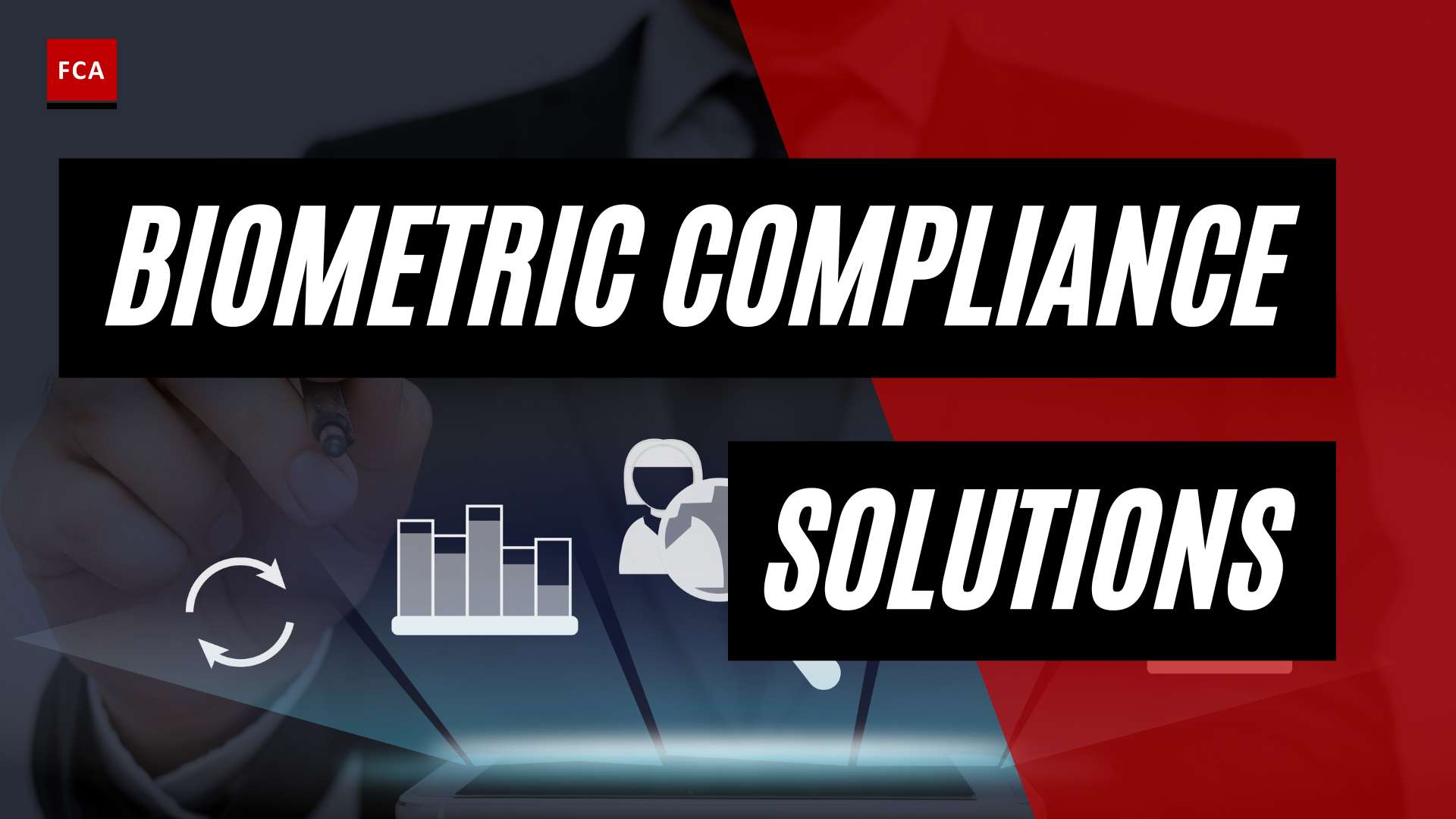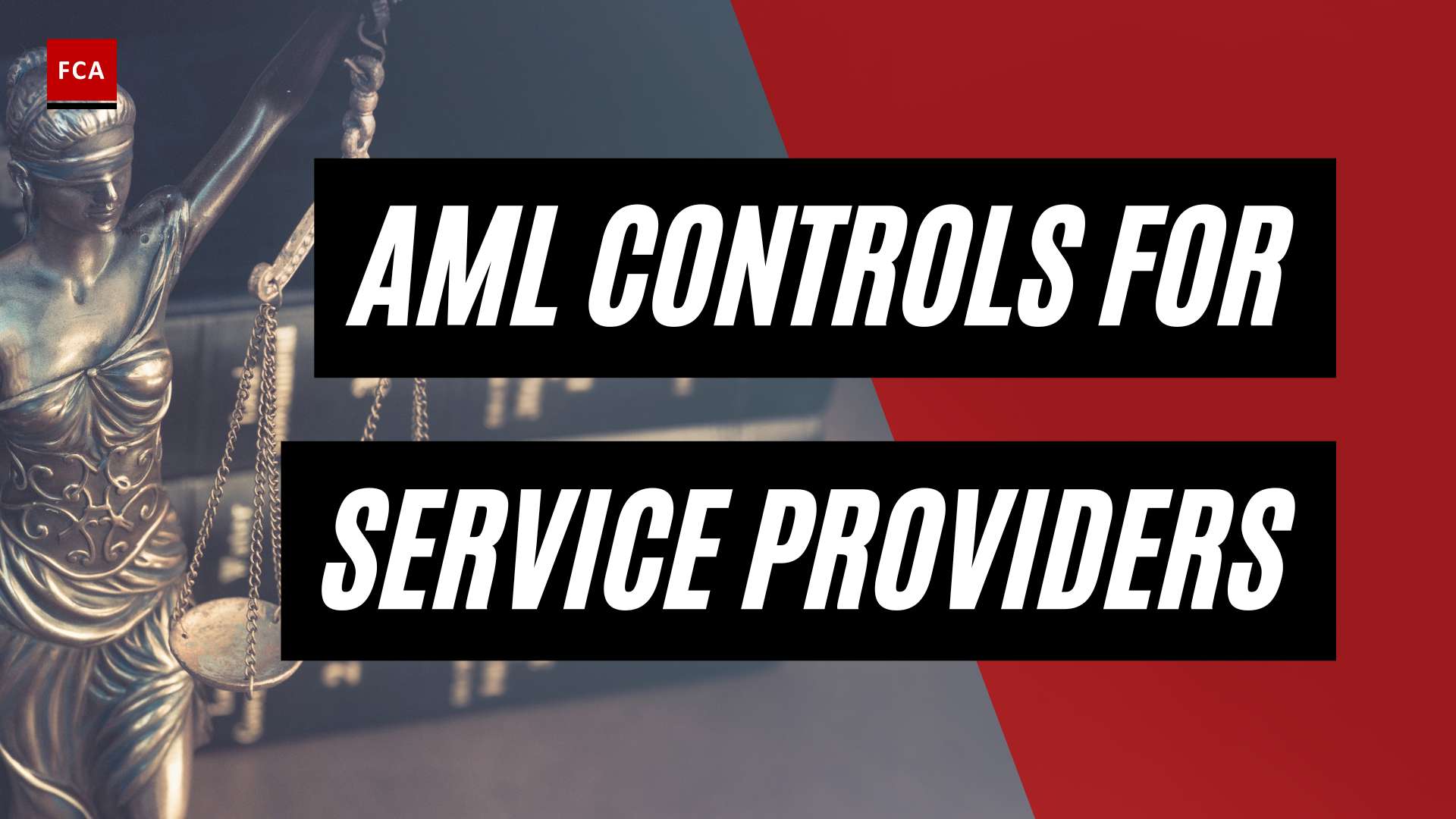Understanding Money Laundering Through Real Estate
Money laundering through real estate has become an increasingly prevalent concern in the world of financial crime. Criminals often exploit the characteristics of real estate transactions to conceal and legitimize illicit funds. By funneling money through real estate deals, they can obscure the origins of the funds and integrate them into the legitimate economy.
Introduction to Money Laundering in Real Estate
Money laundering in real estate involves the process of making illegally obtained money appear legal by investing it in property or using real estate transactions to move illicit funds. Criminals may use various methods to launder money through real estate, such as:
-
Property Flipping: Criminals purchase properties, artificially inflate their value through renovations or fraudulent appraisals, and quickly resell them to generate clean funds.
-
Shell Companies: Criminals create complex ownership structures by using shell companies or trusts to purchase properties. These entities obscure the true beneficial owners, making it difficult to trace the illicit funds.
-
Cash Transactions: The use of large amounts of cash in real estate transactions can help criminals avoid detection and reporting requirements, as cash transactions may be subject to less scrutiny.
-
Mortgage Fraud: Criminals may engage in mortgage fraud schemes, such as providing false information or misrepresenting the value of the property, to obtain loans using illicit funds.
-
International Transactions: Money laundering through real estate can also involve cross-border transactions, where criminals utilize real estate markets in different jurisdictions to move funds and exploit loopholes in regulations.
To combat money laundering through real estate, governments and regulatory bodies have implemented various measures and legislation. These efforts aim to enhance transparency, identify suspicious transactions, and hold accountable those involved in facilitating money laundering activities. In the following sections, we will explore the risks and vulnerabilities in real estate transactions, the regulatory framework for preventing real estate money laundering, and the responsibilities of real estate professionals in AML compliance.
For more information on specific money laundering schemes and methods used in real estate, refer to our article on real estate money laundering schemes.
Risks and Vulnerabilities in Real Estate Transactions
Money laundering through real estate poses significant risks and vulnerabilities due to the nature of these transactions. Understanding the characteristics of real estate money laundering and identifying high-risk factors is crucial for effective prevention and detection efforts.
Characteristics of Real Estate Money Laundering
Money laundering through real estate involves the process of making illicit funds appear legitimate through property transactions. Several characteristics make real estate an attractive avenue for money laundering:
-
High Transaction Values: Real estate transactions often involve substantial amounts of money. This allows for large sums to be laundered in a single transaction, making it an attractive option for criminals looking to legitimize their illicit funds.
-
Complex Ownership Structures: Real estate transactions can involve complex ownership structures, including the use of legal entities such as shell companies, trusts, or nominee shareholders. These structures can obscure beneficial ownership and make it challenging to trace the true source of funds.
-
Opaque Property Ownership: The real estate sector is susceptible to anonymity, making it easier for money launderers to hide their identities. This can be achieved through the use of offshore companies or nominee owners, making it difficult for law enforcement agencies to identify the individuals behind the transactions.
-
Inflated Property Values: Money launderers may artificially inflate the value of a property to legitimize additional funds. This manipulation of property values can facilitate the integration of illicit funds into the legitimate economy.
High-Risk Factors in Real Estate Deals
Certain factors in real estate deals can indicate a higher risk of money laundering. Real estate professionals should be vigilant when encountering the following:
-
Cash Transactions: Cash transactions, particularly those involving large sums, can be indicative of money laundering. Cash purchases may be used to avoid detection by financial institutions and bypass anti-money laundering controls.
-
Unusual Financing Arrangements: Unexplained, complex, or unconventional financing arrangements, such as loans from non-traditional sources or unregistered lenders, can raise suspicions of money laundering.
-
Rapid Resales or Flips: Properties that are quickly bought and sold, often within a short period, may suggest money laundering activity. This practice, known as property flipping, can be used to artificially inflate property values and legitimize illicit funds.
-
Geographic Risk Factors: Certain regions or locations may have a higher risk of real estate money laundering. For example, areas with lax regulations, high levels of corruption, or significant foreign investment may be more susceptible to illicit activities.
Being aware of these characteristics and high-risk factors can help real estate professionals and regulatory authorities identify potential instances of money laundering in real estate transactions. By implementing robust anti-money laundering measures, such as compliance programs and reporting requirements, the real estate sector can play a vital role in preventing and combating this illicit activity.
For more information on the regulatory framework and international efforts to combat real estate money laundering, refer to the sections on Regulatory Framework for Preventing Real Estate Money Laundering and International Efforts to Combat Real Estate Money Laundering.
Regulatory Framework for Preventing Real Estate Money Laundering
To combat money laundering through real estate transactions, various regulatory frameworks have been established. These frameworks aim to prevent illicit funds from being integrated into the real estate sector. Two key components of the regulatory framework are Anti-Money Laundering (AML) laws and regulations, as well as Geographic Targeting Orders (GTOs) and Suspicious Activity Reports (SARs).
Anti-Money Laundering (AML) Laws and Regulations
Financial institutions are required to implement Anti-Money Laundering (AML) compliance programs, as mandated by the Bank Secrecy Act (BSA). These programs include policies and procedures designed to monitor real estate transactions for potential money laundering activities (AML RightSource). AML laws and regulations provide guidelines for customer due diligence, beneficial ownership identification, and reporting requirements to detect and deter money laundering in the real estate sector.
Real estate professionals, such as agents and brokers, have also faced increased scrutiny in recent years regarding their responsibilities in identifying and reporting suspicious activity related to money laundering in real estate transactions (AML RightSource). These professionals play a vital role in maintaining the integrity of the real estate market by adhering to AML regulations and reporting any suspicious transactions to the appropriate authorities.
Geographic Targeting Orders (GTOs) and Suspicious Activity Reports (SARs)
To further prevent money laundering in real estate transactions, the U.S. Treasury Department has issued Geographic Targeting Orders (GTOs) in specific regions. GTOs require certain real estate transactions to be reported to the Financial Crimes Enforcement Network (FinCEN), helping to identify potential money laundering activities (AML RightSource). These orders aim to curb illicit funds by increasing transparency and monitoring high-risk sectors.
Financial institutions, including those involved in real estate transactions, are required to file Suspicious Activity Reports (SARs) when they identify transactions or activities that raise suspicions of money laundering or other illicit financial activities. SARs provide a mechanism for reporting suspicious transactions to the appropriate authorities for further investigation. By filing SARs, financial institutions contribute to the collective effort in combating real estate money laundering.
The regulatory framework for preventing real estate money laundering involves a collaborative approach between financial institutions, real estate professionals, and regulatory bodies. By implementing AML compliance programs, adhering to reporting requirements, and actively participating in efforts to identify and prevent money laundering, the real estate sector can contribute to maintaining the integrity and transparency of financial systems.
Real Estate Professionals and AML Compliance
Real estate professionals, such as agents and brokers, play a crucial role in preventing and detecting money laundering through real estate transactions. In recent years, their responsibilities in identifying and reporting suspicious activity related to money laundering in real estate have come under increased scrutiny (AML RightSource). Let’s explore the responsibilities of real estate agents and brokers and the compliance programs and reporting requirements they must adhere to.
Responsibilities of Real Estate Agents and Brokers
Real estate agents and brokers have a duty to exercise due diligence and be vigilant in identifying potential money laundering activities in real estate transactions. Their responsibilities include:
-
Customer Due Diligence (CDD): Real estate professionals are expected to conduct thorough due diligence on their clients, also known as the Know Your Customer (KYC) process. This involves verifying the identity of buyers and sellers, understanding the nature and purpose of the transaction, and assessing the source of funds involved. By performing CDD, agents and brokers can identify any red flags or inconsistencies that may indicate potential money laundering (Tookitaki).
-
Beneficial Ownership Identification: Real estate professionals should make reasonable efforts to determine the beneficial ownership of the entities involved in the transaction. Beneficial ownership refers to individuals who ultimately own or control the entity. This information helps to uncover any hidden interests or potential illicit activities associated with the transaction (Tookitaki).
-
Reporting Suspicious Transactions: The Financial Crimes Enforcement Network (FinCEN) in the United States requires real estate professionals to report suspicious activities that could indicate money laundering, structuring, or other illicit financial activities. This includes filing Suspicious Activity Reports (SARs) to alert authorities of any suspicious transactions or behaviors (Tookitaki).
Compliance Programs and Reporting Requirements
Real estate professionals must establish and maintain comprehensive Anti-Money Laundering (AML) compliance programs to prevent money laundering in real estate transactions. These programs should include:
-
Policies and Procedures: Agents and brokers should have written policies and procedures that outline their AML obligations, including the steps to be taken for customer due diligence, beneficial ownership identification, and reporting suspicious transactions. These policies and procedures should be regularly reviewed and updated to reflect changing regulations and best practices (AML RightSource).
-
Training and Awareness: Real estate professionals should provide regular training to their staff on AML compliance, including the identification of red flags and suspicious activity indicators. This helps ensure that all employees are knowledgeable about their responsibilities and can effectively contribute to the prevention of money laundering (AML RightSource).
-
Recordkeeping: Agents and brokers should maintain accurate and up-to-date records of their AML activities, including customer due diligence documentation, beneficial ownership information, and any reports filed. These records should be retained for a specified period as required by applicable regulations (AML RightSource).
To ensure compliance with AML regulations, real estate professionals should stay informed about the real estate money laundering legislation and regulatory requirements in their jurisdiction. It is vital to keep up with developments, such as the upcoming regulations stemming from the Anti-Money Laundering Act of 2020, which will require the issuance of regulations regarding AML programs for persons involved in real estate closings and settlements by March 10, 2022.
By fulfilling their responsibilities and implementing robust compliance programs, real estate professionals can contribute to the prevention and detection of money laundering in the real estate sector. Collaboration with regulatory authorities, financial institutions, and other stakeholders is essential in maintaining the integrity of real estate transactions and combating illicit financial activities.
International Efforts to Combat Real Estate Money Laundering
As money laundering through real estate continues to be a global concern, international efforts have been made to combat this illicit activity. Two prominent initiatives in this regard are the Financial Action Task Force (FATF) recommendations and legislation in the European Union (EU) and the United States.
Financial Action Task Force (FATF) Recommendations
The FATF, an intergovernmental organization focused on combating money laundering and terrorist financing, has recognized the risks associated with money laundering in the real estate sector. To address this issue, they have issued recommendations that provide guidance to countries on how to strengthen their anti-money laundering (AML) frameworks, including measures specific to real estate transactions (Tookitaki).
Some of the key FATF recommendations related to real estate money laundering prevention include:
- Customer Due Diligence (CDD): Implementing robust CDD measures to identify and verify the identity of parties involved in real estate transactions. This includes conducting enhanced due diligence for high-risk customers and beneficial ownership identification.
- Reporting Suspicious Transactions: Establishing mechanisms for reporting suspicious transactions and activities related to real estate. This encourages real estate professionals to report any unusual or suspicious behavior that may indicate potential money laundering.
By adopting and implementing these recommendations, countries can enhance their regulatory frameworks and strengthen their ability to detect and prevent money laundering through real estate transactions.
Legislation in the European Union and the United States
The European Union and the United States have also taken legislative measures to address the risks of money laundering in the real estate sector.
In the EU, the Fourth Anti-Money Laundering Directive and the Fifth Anti-Money Laundering Directive contain provisions aimed at preventing money laundering through real estate transactions. These directives strengthen regulations and enforcement measures, requiring member states to enhance due diligence requirements and implement measures to identify and mitigate the risks associated with real estate transactions.
Similarly, the United States has introduced legislation to combat money laundering through real estate deals. For instance, the Anti-Money Laundering Act of 2020 includes provisions that require the Financial Crimes Enforcement Network (FinCEN) to issue regulations regarding anti-money laundering programs for individuals involved in real estate closings and settlements. These regulations aim to enhance due diligence and reporting requirements in the real estate sector and are expected to be issued by March 10, 2022.
These legislative measures demonstrate a commitment to combating real estate money laundering by imposing stricter regulations and increasing transparency in real estate transactions.
By implementing the FATF recommendations and enacting legislation, countries can work towards creating a robust regulatory framework to prevent money laundering through real estate. A collaborative approach that involves coordination among governments, financial institutions, and real estate professionals is crucial to effectively combat this illicit activity and safeguard the integrity of the real estate sector.
Case Studies: Real Estate Money Laundering Incidents
To fully understand the impact and consequences of real estate money laundering, it is essential to examine real-life case studies. The following examples shed light on the various methods employed and the potential consequences faced by those involved in real estate money laundering.
Examples of Real Estate Money Laundering Cases
-
Large-Scale Money Laundering in the United States: In recent years, the United States has witnessed several high-profile cases of money laundering through real estate. For instance, a private bank was alleged to have turned a blind eye to illegal real estate transactions, including allowing an account owned by the Vatican to spend $350 million investing in London property. The Vatican lost millions of euros to mortgage brokers, some of which were donated by the Catholic community. Drug traffickers also utilized these funds to purchase property in Bulgaria (ComplyAdvantage).
-
UK Property Purchases by Russians Accused of Corruption: Transparency International found that £1.5 billion worth of UK property, mostly in London, was bought by Russians accused of corruption and/or sanctioned. In 48 Russian money laundering and corruption cases, involving over £82 billion of funds, 2,189 firms registered in the UK and its overseas territories were employed. These funds were disguised through rigged procurement, embezzlement, and bribery (ComplyAdvantage).
These cases indicate the widespread nature and significant financial implications of money laundering through real estate. Institutions and jurisdictions worldwide are increasingly recognizing the need for robust regulations and enforcement to combat these illicit activities.
Consequences and Penalties for Violations
Money laundering through real estate carries severe consequences and penalties for those involved. These can include:
-
Civil Penalties: Individuals and entities found guilty of money laundering through real estate may face substantial civil penalties. These penalties can range from monetary fines to the forfeiture of assets acquired through illicit means. The exact penalties vary depending on the jurisdiction and the severity of the offense.
-
Criminal Charges: In cases of egregious money laundering schemes involving real estate, criminal charges may be filed. Convictions can result in lengthy prison sentences, further monetary fines, and the confiscation of assets linked to the illicit activities.
-
Reputational Damage: Individuals and businesses involved in real estate money laundering can suffer severe reputational damage. This can lead to a loss of trust from clients, financial partners, and the public, potentially impacting their ability to operate in the industry.
-
Regulatory Intervention: Regulatory bodies, such as financial intelligence units and law enforcement agencies, closely monitor real estate transactions for potential money laundering activities. If suspicions arise, investigations can be launched, resulting in regulatory intervention, increased scrutiny, and potential sanctions or license revocation.
It is crucial for individuals working in the real estate industry to be aware of the risks associated with money laundering and to implement robust anti-money laundering (AML) compliance programs. By doing so, they can help protect themselves, their businesses, and the integrity of the real estate market as a whole.
By studying real-life cases and understanding the consequences faced by those involved in real estate money laundering, professionals can gain valuable insights into the importance of stringent AML measures and the need for ongoing vigilance in combating this illicit practice.
Future Trends and Prevention Measures
As the fight against money laundering through real estate intensifies, governments and regulatory bodies are implementing new measures to strengthen anti-money laundering (AML) efforts. This section will explore the focus of the Biden administration on real estate money laundering and the Anti-Money Laundering Act of 2020, which brings about important changes to the regulatory landscape.
The Biden Administration’s Focus on Real Estate Money Laundering
The Biden administration has identified real estate embezzlement and corruption as key areas of concern, with a specific focus on all-cash transactions as a loophole exploited by criminals engaged in real estate money laundering schemes. Currently, professionals involved in real estate closing and settlements in the United States are not required to adhere to AML and counter-terrorism financing (CTF) programs and regulations. However, the Biden administration aims to address this issue by introducing more scrutiny and regulations to combat money laundering in the real estate sector (ComplyAdvantage).
Anti-Money Laundering Act of 2020 and Coming Regulations
The Anti-Money Laundering Act of 2020 represents a significant development in preventing real estate money laundering. The act includes provisions that require the Financial Crimes Enforcement Network (FinCEN) to issue regulations regarding AML programs for individuals involved in real estate closings and settlements. These regulations are expected to be issued by March 10, 2022.
Under these forthcoming regulations, covered businesses in the real estate sector will be required to implement AML programs and comply with reporting and recordkeeping requirements. These programs must include the development of internal policies, procedures, and controls, as well as the designation of a compliance officer responsible for program implementation and monitoring. The regulations specify that covered businesses must establish and implement an AML program within 180 days after the effective date of the regulations or within 180 days after becoming a covered business (Federal Register).
To ensure the effectiveness of AML programs, the regulations also emphasize the importance of customer due diligence and beneficial ownership reporting. Covered businesses will be required to identify and verify the identity of individuals involved in real estate transactions, further enhancing the transparency and accountability of the sector (Federal Register).
These new regulations mark a significant step forward in the fight against real estate money laundering. By implementing robust AML programs and adhering to reporting and recordkeeping requirements, the real estate sector can contribute to the prevention and detection of illicit financial activities. It is essential for professionals working in real estate to stay informed about these upcoming regulations and ensure compliance to protect the integrity and reputation of the industry.
Best Practices for Real Estate Professionals
To effectively combat money laundering through real estate, real estate professionals play a vital role in implementing robust anti-money laundering (AML) practices. By following best practices and adhering to regulatory requirements, professionals can mitigate the risks associated with real estate money laundering schemes. Two key areas of focus for real estate professionals are due diligence and beneficial ownership identification, as well as compliance with AML programs.
Due Diligence and Beneficial Ownership Identification
Real estate professionals should conduct thorough due diligence when engaging in transactions to identify potential money laundering risks. This involves verifying the identity of the parties involved and understanding the source of funds used for the transaction. By conducting proper due diligence, professionals can assess the legitimacy of the transaction and identify any red flags that may indicate money laundering activity.
One crucial aspect of due diligence is the identification of beneficial ownership. This refers to identifying the individuals who ultimately own or control the property or the funds used in the transaction. Professionals should strive to gather accurate and up-to-date information on beneficial owners to ensure transparency and prevent the misuse of real estate transactions for illicit purposes.
To effectively identify beneficial ownership, real estate professionals can utilize resources such as public records, government databases, and corporate registries. It is essential to verify the information obtained and cross-reference it with other available data to ensure accuracy.
Compliance with Anti-Money Laundering Programs
Real estate professionals must comply with AML programs and regulations to prevent real estate money laundering. In the United States, the Financial Crimes Enforcement Network (FinCEN) requires certain real estate professionals, such as brokers, to report suspicious activities related to money laundering, structuring, or other illicit financial activities. However, as of now, professionals involved in real estate closing and settlements are not required to adhere to AML and counter-terrorism financing (CTF) programs and regulations.
The Anti-Money Laundering Act of 2020 included legislation that mandates the issuance of regulations by the Financial Crimes Enforcement Network for persons involved in real estate closings and settlements. These regulations are expected to be issued by March 10, 2022 (Federal Register). Real estate professionals should stay updated on these regulations and ensure compliance once they are implemented.
To enhance AML compliance, real estate professionals should establish comprehensive internal policies and procedures. This includes implementing risk-based AML programs, conducting regular training on AML requirements, and monitoring transactions for suspicious activities. By having robust compliance measures in place, professionals can contribute to the prevention and detection of real estate money laundering.
By implementing due diligence practices and complying with AML programs, real estate professionals can actively contribute to the prevention of money laundering through real estate transactions. These best practices, combined with collaborative efforts from government agencies and financial institutions, are crucial in safeguarding the real estate sector from illicit activities.
Collaborative Efforts to Combat Real Estate Money Laundering
Fighting real estate money laundering requires a collaborative approach involving various stakeholders, including financial institutions, real estate professionals, and government entities. By working together, these parties can strengthen the effectiveness of anti-money laundering (AML) measures and mitigate the risks associated with money laundering in the real estate sector.
Cooperation between Financial Institutions and Real Estate Professionals
Financial institutions play a pivotal role in combating real estate money laundering. They are required to implement AML compliance programs and report suspicious transactions, including those involving real estate deals. To enhance the effectiveness of these efforts, cooperation between financial institutions and real estate professionals is essential.
Financial institutions are encouraged to establish strong relationships with real estate professionals, enabling them to exchange information and collaborate in identifying and reporting potential money laundering activities. This cooperation allows for a more comprehensive understanding of the risks and vulnerabilities associated with real estate transactions. By sharing insights and intelligence, financial institutions and real estate professionals can work together to detect and prevent illicit financial activities in the real estate sector.
Government Initiatives and Industry Guidelines
Governments around the world have recognized the need to address real estate money laundering and have taken various initiatives to combat this issue. These initiatives include the introduction of legislation, regulations, and guidelines aimed at preventing money laundering through real estate transactions.
For instance, in the United States, the U.S. Treasury Department has issued Geographic Targeting Orders (GTOs) to expand the reach of AML regulations to cover both residential and commercial real estate in high-risk areas. These orders require financial institutions and real estate professionals to gather and report specific information about certain real estate transactions in designated geographic areas. Additionally, the Bank Secrecy Act (BSA) imposes obligations on financial institutions, including the implementation of AML compliance programs and reporting suspicious activities related to real estate transactions (AML RightSource).
Industry organizations and associations also play a crucial role in combating real estate money laundering. They provide guidance, best practices, and training to real estate professionals to enhance their understanding of AML requirements and improve their ability to identify and report suspicious activities. By adhering to these industry guidelines, real estate professionals can contribute to the overall efforts in preventing money laundering in the real estate sector.
Through collaborative efforts between financial institutions, real estate professionals, and government entities, the fight against real estate money laundering can be strengthened. By sharing information, implementing robust compliance programs, and adhering to regulations and industry guidelines, these stakeholders can collectively contribute to a more secure and transparent real estate market, safeguarding it against the risks associated with illicit financial activities.








